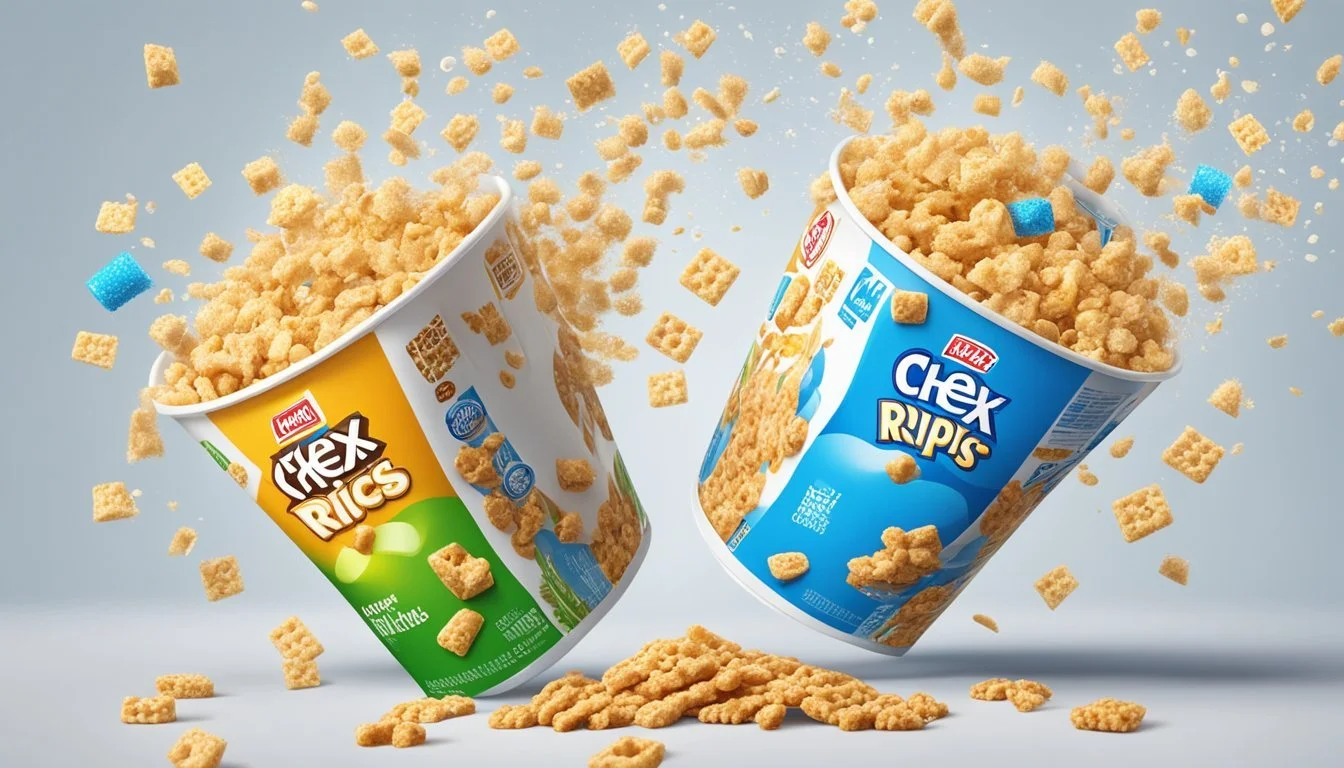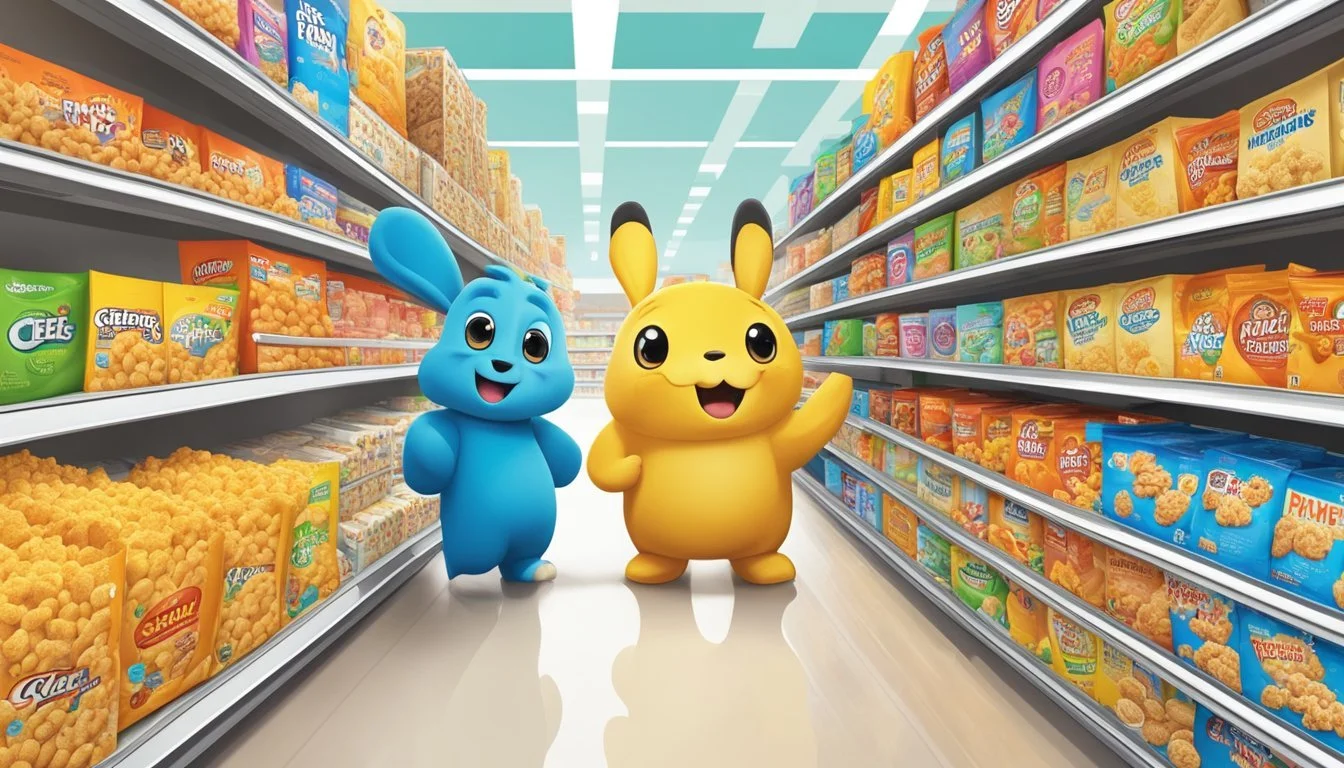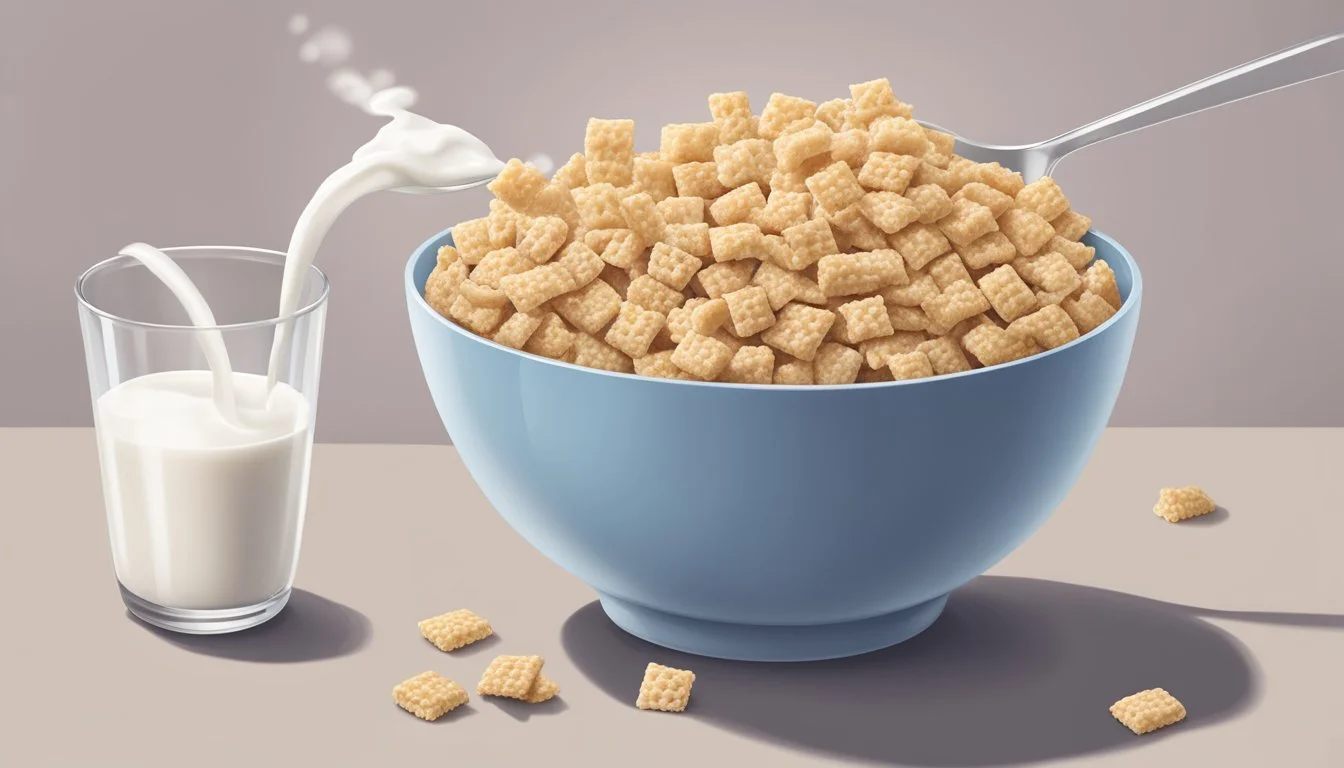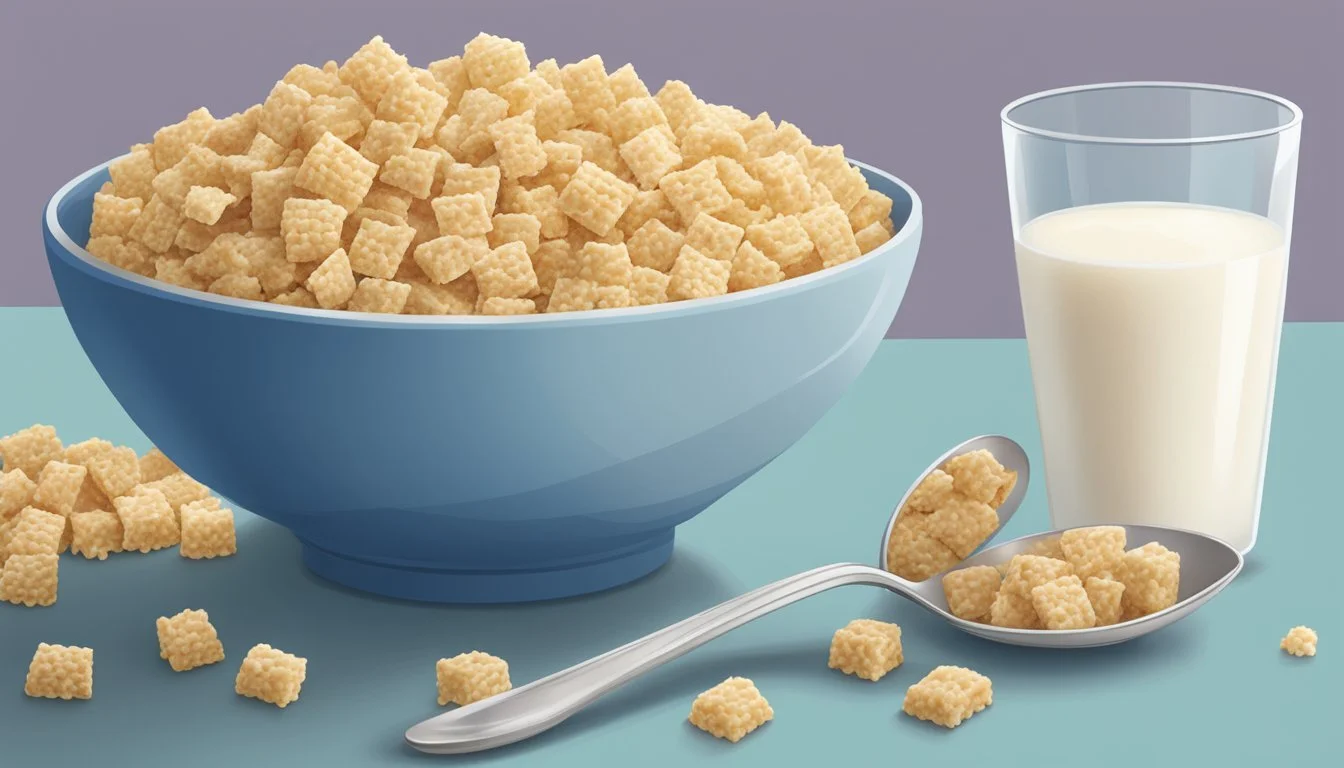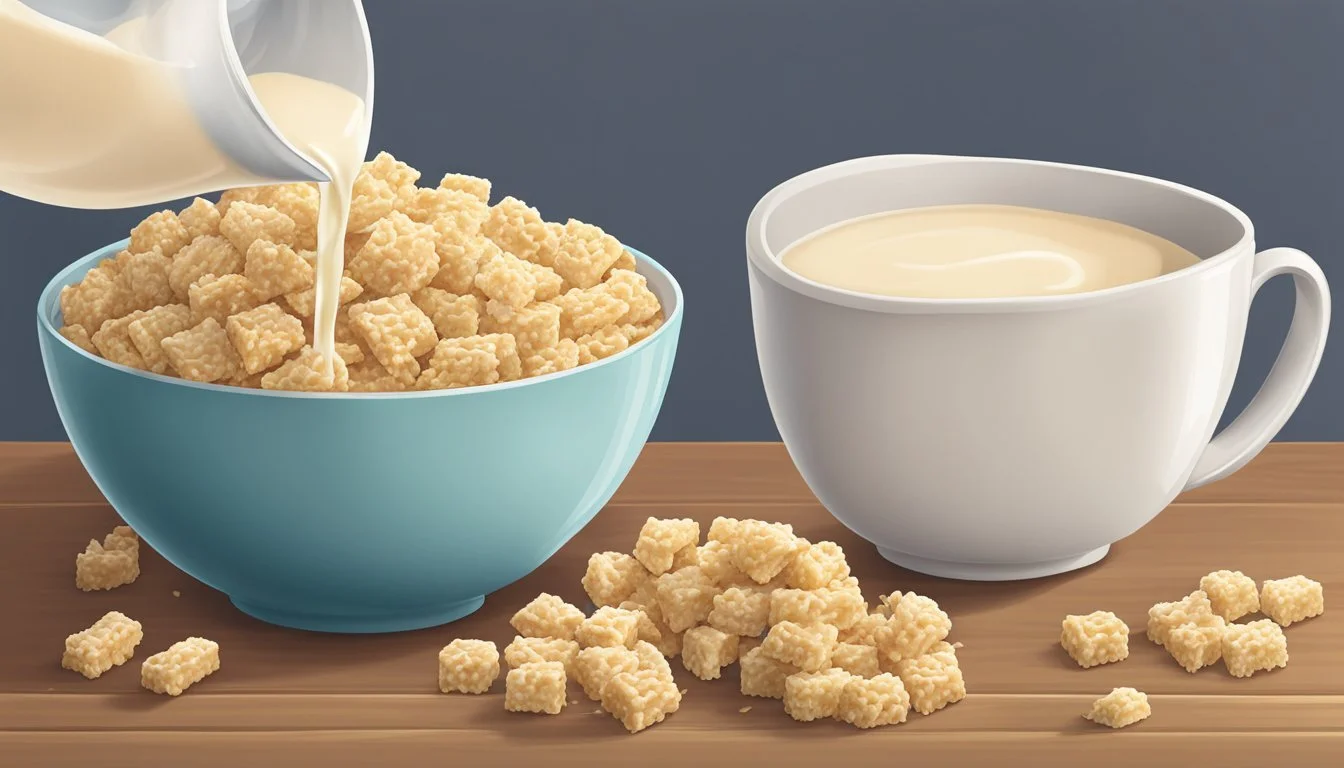Chex vs Rice Krispies
Comparing Flavor, Nutrition, and Versatility
This Article is Part of Our Breakfast Cereal Guide with Details on Chex Nutrition and Rice Krispies Nutrition
When it comes to choosing a healthy breakfast cereal, Chex and Rice Krispies are popular contenders, each with its unique nutritional benefits. Chex, produced by General Mills, offers a variety of options, including Rice Chex and Corn Chex. On the other hand, Rice Krispies by Kellogg's has long been a household favorite, known for its distinctive snap, crackle, and pop.
Rice Chex contains 23 grams of complex carbohydrates per serving, slightly more than the 22 grams found in Rice Krispies. Both cereals are low in fat and provide essential vitamins and minerals, but their nutritional profiles vary in other areas. For instance, General Mills prioritizes whole grain ingredients in their Chex cereals, which can be a beneficial factor for those seeking more fiber in their diets.
Consumers often prioritize different attributes in cereals—whether it's wanting lower sugar content, higher fiber, or simply a familiar taste. By comparing Chex and Rice Krispies, the reader can gain a clearer perspective on which cereal best aligns with their dietary goals and preferences, helping them make an informed decision about their breakfast choices.
Historical Background
Chex and Rice Krispies are two iconic cereals that have been enjoyed for decades.
Rice Krispies was launched by the Kellogg Company in 1928. This cereal became renowned for its unique "snap, crackle, and pop" sound when milk is added. Chex, introduced by General Mills, dates back to 1937. It initially gained popularity for its distinctive lattice shape and versatility in recipes.
Key Milestones
1928: Kellogg releases Rice Krispies.
1937: General Mills introduces Chex.
1940s: Recipes for Rice Krispies treats appear on cereal boxes.
Marketing Highlights
Kellogg's Rice Krispies saw widespread success with various marketing campaigns, including a memorable TV commercial featuring the Rolling Stones in 1963. Chex has also utilized memorable marketing, notably through its use in Chex Mix.
Nutritional Evolution
Rice Krispies and Chex have adapted to changing consumer preferences over the years. Both have seen variations in flavors and formulations aimed at improving health and nutrition. For instance, the introduction of whole grain variants caters to the growing demand for healthier options.
Kellogg's and General Mills continue to innovate within their product lines, ensuring these cereals remain staples in households.
Product Overview
Chex and Rice Krispies are popular cereals, each offering unique features and varieties that cater to different tastes and dietary needs.
Chex Cereal Variety
Chex cereal comes in multiple varieties, including Rice Chex, Corn Chex, and Wheat Chex. Each type offers distinct flavors and textures, making Chex versatile for different recipes and snack mixes.
Rice Chex: Light and crispy, ideal for those seeking gluten-free options.
Corn Chex: Boasts a slightly sweet flavor and is also gluten-free.
Wheat Chex: Provides a heartier, denser texture, rich in whole grains.
Chex also features flavors like Honey Nut, Chocolate, and Cinnamon. Among these, Cinnamon Chex is praised for its sweet and spicy blend. The brand often appeals to those looking for lower-sugar options compared to cereals like Frosted Flakes or Froot Loops.
Rice Krispies Features
Kellogg's Rice Krispies are known for their iconic "snap, crackle, pop" sound when milk is added. This cereal is made primarily from puffed rice and is a staple for homemade treats like Rice Krispies Treats.
Nutrition: Each serving typically contains 22 grams of complex carbohydrates and minimal fat. It's not as fiber-rich as some cereals like Cheerios or Special K.
Ingredients: Simple and straightforward, mainly consisting of rice, sugar, and salt. There's a gluten-free variant for those with dietary restrictions.
Rice Krispies' straightforward ingredients make it a favorite among parents and children alike. While it doesn't boast the antioxidants of cereals like Smart Start Original, it remains a classic choice for breakfast bowls and baked goods.
Nutritional Comparison
This section focuses on comparing the nutritional aspects of Rice Chex and Rice Krispies. It covers differences in calories, serving sizes, macronutrients, and vitamins and minerals to help readers make an informed choice.
Calories and Serving Size
Understanding the calorie content and serving sizes of Rice Chex and Rice Krispies can guide portion control. Rice Chex contains approximately 160 calories per 1 1/2 cup serving, while Rice Krispies has slightly fewer calories at around 130 calories per 1 1/2 cup serving.
The serving sizes are similar, allowing for a straightforward calorie comparison. For those aiming to manage their calorie intake, this minor difference could be significant. Always check the serving size on the packaging as it can vary slightly.
Macronutrient Content
Macronutrients such as carbohydrates, proteins, and fats are key factors in choosing a breakfast cereal. Rice Chex offers 35 grams of carbohydrates, including 2 grams of dietary fiber and 3 grams of sugar, with 3 grams of protein and 1 gram of fat per serving.
Rice Krispies, on the other hand, provides 29 grams of carbohydrates, with less fiber and sugar, approximately 1 gram each, and 2 grams of protein and 0.2 grams of fat per serving. This makes Rice Chex a slightly better option for those looking for more fiber and protein.
Vitamins and Minerals Content
Vitamins and minerals fortify cereals, adding to their nutritional value. Both Rice Chex and Rice Krispies are typically enriched with essential vitamins and minerals such as iron, vitamin D, and B vitamins.
Rice Chex tends to have a higher sodium content at 330 milligrams per serving, compared to Rice Krispies which contains 220 milligrams. Depending on individual dietary needs, the difference in sodium might be an important consideration. Checking the packaging for specific fortification levels is always a good practice as they can vary by brand and formulation.
In summary, both cereals have their pros and cons, with Rice Chex offering higher fiber and protein content, while Rice Krispies tends to have lower sodium and calorie counts.
Dietary Considerations
Selecting between Chex and Rice Krispies often boils down to specific dietary needs and preferences. Key factors include nutritional value, gluten-free options, potential allergens, and weight loss relevance.
Healthier Choice
Chex, particularly Rice Chex, tends to be a healthier option. Rice Chex offers 23 grams of complex carbohydrates, whereas Rice Krispies provide 22 grams. Both cereals are low in fat and sugar, but Rice Chex has slightly higher amounts of carbohydrates.
Cereal Calories Fat Sodium Carbs Sugar Protein Rice Chex 160 1g 330mg 35g 3g 3g Rice Krispies 150 0g 290mg 34g 4g 2g
In terms of sodium, both contain moderate amounts, with Rice Chex containing 330 mg and Rice Krispies 290 mg per serving.
Gluten-Free Options
Gluten-free diets exclude gluten protein found in wheat, barley, and rye. Rice Chex is a gluten-free cereal, making it suitable for those with celiac disease or gluten sensitivity. It's clearly labeled as such, ensuring consumers can easily identify it as a safe option.
On the other hand, Rice Krispies, though made primarily from rice, often contains malt flavoring derived from barley, which contains gluten. Therefore, Rice Krispies are generally not considered a gluten-free product and should be avoided by those requiring gluten-free options.
Allergy Info
Allergy information is crucial for those with food sensitivities. Rice Chex generally has a straightforward ingredient list but may be processed in facilities that handle allergens like nuts or dairy, so checking labels is essential.
Rice Krispies also have a similar consideration. They do not typically include nuts or dairy but may be processed in similar environments. Individuals with severe allergies should read packaging labels carefully to avoid cross-contamination risks.
Weight Loss Relevance
Both cereals can be part of a balanced diet for weight loss. Portion control is critical as both serve around 150-160 calories per cup. Rice Chex offers a slightly higher amount of protein at 3 grams per serving compared to Rice Krispies' 2 grams, providing better satiety.
When choosing cereals for weight loss, the focus should be on balanced nutrition and avoiding added sugars. Rice Chex contains a bit less sugar, making it a potentially better option for those watching their sugar intake. Including fresh fruits can enhance fiber content, further supporting weight management efforts.
Brand Reputation and Consumer Preference
Chex and Rice Krispies hold distinct places in the cereal market, shaped by their manufacturers and the preferences of their consumers. Understanding these factors can provide insight into their popularity and reliability.
Manufacturer Reputation
Chex is produced by General Mills, a company known for its diverse product portfolio and commitment to health-conscious products. General Mills has built a reputation for innovation and quality, consistently ranking high in consumer trust and loyalty.
Kellogg's, the manufacturer of Rice Krispies, is a well-established brand with a long history. Kellogg's emphasizes nutritional content and taste, often investing in marketing to maintain consumer interest. Their focus on quality and consistency has garnered them a loyal customer base.
Both brands have strong reputations, but General Mills is often seen as slightly more innovative, while Kellogg's is considered steadfast and reliable.
Market Presence
Chex holds a significant market share and is often perceived as a healthier option due to its focus on whole grains and lower sugar content. General Mills offers various Chex products, including gluten-free versions, which cater to health-conscious consumers. This diversity helps maintain its strong position in the market.
Rice Krispies, on the other hand, is ubiquitous in American households thanks to its distinctive snap, crackle, and pop sound. Kellogg's has effectively maintained its market presence through consistent advertising and brand extensions like Rice Krispies Treats. Its broad appeal and nostalgic value contribute to its robust market position.
While Chex appeals to health-focused buyers, Rice Krispies' extensive advertising and iconic status ensure it remains a staple for many.
Shopping and Availability
Both Rice Chex and Rice Krispies are widely available options for consumers, with ease of purchasing both in-store and online. Brick-and-mortar grocery stores often stock these cereals, while various online retailers provide convenient delivery options.
In-Store Shopping Experience
Rice Chex and Rice Krispies can be found in most major grocery stores. Stores like Walmart, Target, and Kroger generally have dedicated cereal aisles where both products are prominently displayed.
Shoppers might notice varying prices depending on the store.
In-store promotions and discounts are common. Consumers can often find deals when buying multiple boxes. Using in-store apps like Target's Circle or Kroger's digital coupons can also lead to additional savings.
Online Purchase Options
Online shopping for Rice Chex and Rice Krispies is convenient. Websites such as Amazon, Walmart, and Target offer both products. These platforms usually provide detailed product information, including nutritional facts and reviews from other buyers.
Subscription services like Amazon's Subscribe & Save can offer cost savings and ensure regular delivery. Other online retailers, such as Instacart, allow for grocery delivery from local stores, making it handy for those who prefer not to visit in-person.
Online prices might include shipping fees, but many retailers offer free shipping for minimum purchase amounts.
Marketing and Packaging
The marketing and packaging strategies of Chex and Rice Krispies are pivotal in influencing consumer choices and establishing brand identity. Both brands use targeted advertising and clearly defined nutritional claims to attract different segments of the market.
Advertising Strategies
Chex and Rice Krispies leverage a mix of traditional and digital marketing tactics. Rice Krispies focuses on nostalgic themes and family-oriented messages, often featuring children and parents in their ads. This approach helps to strengthen an emotional connection with consumers.
Chex, produced by General Mills, emphasizes versatility and health benefits. Their campaigns often highlight how Chex can be used in both breakfast and snack recipes. They also tap into social media to showcase user-generated content, making the cereal a part of various food trends.
Overall, Chex tends to emphasize practical uses and health, while Rice Krispies relies on emotional appeal and tradition to maintain its market position.
Nutritional Claims and Labeling
Nutritional labeling plays a critical role in both brands' marketing strategies. Rice Chex labels prominently feature the fact that they contain 23.0 grams of complex carbohydrates per serving. This aligns with FDA recommendations for whole grains and dietary fiber, making it attractive to health-conscious consumers.
Rice Krispies showcases 22.0 grams of complex carbohydrates, aiming to appeal to those looking for quick energy. The brand also maintains a simple ingredient list, often marketing itself as a straightforward, recognizable product that families can trust.
Both brands include additional nutritional claims such as "gluten-free" for Chex, which appears clearly on their packaging. Such information helps consumers make informed decisions based on dietary needs and health goals.
Consumer Education and Resources
In evaluating Chex and Rice Krispies, critical consideration of nutritional information and healthy eating guidelines is necessary. Adequate resources and up-to-date educational materials help consumers make informed decisions.
Nutritional Information Sources
Reliable sources of nutritional information are vital. Consumers should consult the websites of General Mills for Chex and Kellogg’s for Rice Krispies. These sites provide detailed information, including ingredients, serving sizes, and nutrient content.
Other reputable sources include nutritional databases like the USDA FoodData Central, which offers comprehensive and current data. Nutrition labels on cereal boxes themselves are also valuable. Reading these labels allows consumers to compare calories, carbohydrates, sugars, and other nutritional aspects efficiently.
Guidelines for Healthy Eating
Healthy eating guidelines suggest consuming cereals with high fiber and low added sugar. The American Heart Association recommends cereals contain no more than 6 grams of added sugar per serving. Opting for whole grain versions of Chex or Rice Krispies can increase fiber intake.
Including these cereals as part of a balanced diet involves incorporating fruits, nuts, or yogurt to increase nutritional value. Portion control is also key, as it helps manage caloric intake and ensures a well-rounded diet.
By blending trustworthy nutritional data with healthy eating guidelines, consumers can make educated decisions about Chex and Rice Krispies, aligning choices with personal dietary needs.
Conclusion
When considering a healthier choice between Chex and Rice Krispies, it's important to look at the nutritional content and dietary needs.
Nutritional Comparison:
Rice Chex:
23.0 grams of complex carbohydrates per serving
3 grams of fiber
Generally low in protein and sugars
Rice Krispies:
22.0 grams of complex carbohydrates per serving
4 grams of sugar per serving
Contains a modest amount of protein
Both cereals provide essential carbohydrates, but Rice Chex has a slight edge in terms of fiber content.
Dietary Considerations:
Rice Chex is part of a larger line, including options such as Cinnamon Chex, which varies in sugar and sodium content.
Each product can be tailored to different dietary needs, whether requiring higher fiber, lower sugar, or other specific nutritional profiles.
Health Education:
Understanding the nutritional labels and serving sizes is crucial.
Consumers should consider individual dietary requirements and health goals when selecting between these cereals.
Both Chex and Rice Krispies can fit into a balanced diet, provided they are consumed within the context of overall dietary habits and preferences.
In summary, buyers should assess their personal health goals and taste preferences when choosing between these cereals. Each has its own set of benefits and can be part of a healthy diet when chosen wisely.

